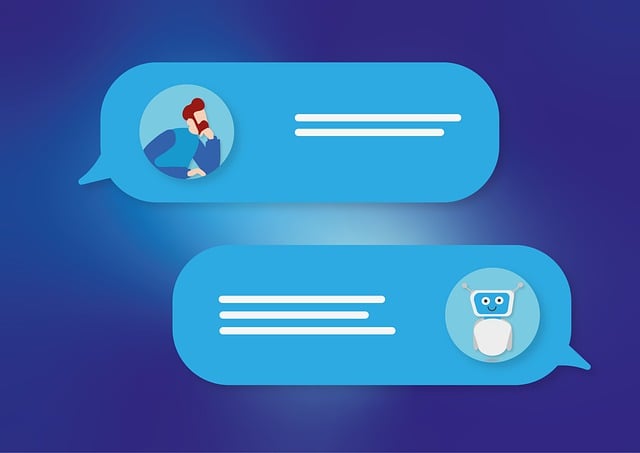AI chatbots, powered by advanced NLP and machine learning, have transformed human-computer interaction, offering dynamic, personalized experiences across diverse sectors like customer service, healthcare, education, and entertainment. Key factors for evaluating a chatbot's performance include accuracy, response time, consistency, and user engagement, with platforms like Dialogflow, IBM Watson Assistant, and Microsoft Bot Framework enabling developers to create sophisticated conversational interfaces. These chatbots are becoming integral parts of our digital lives by optimizing processes and enhancing user satisfaction.
In today’s digital landscape, AI chatbots have emerged as game-changers, revolutionizing customer service and engagement. This article delves into the world of these intelligent assistants, exploring their functionality and benefits. We’ll guide you through key features that set top-rated chatbots apart and showcase popular applications across various industries. Additionally, we’ll discuss how to evaluate chatbot performance using essential metrics, ensuring you choose the best AI chatbot for your needs.
- Understanding AI Chatbots: Their Functionality and Benefits
- Key Features to Look for in Top-Rated Chatbots
- Popular AI Chatbot Applications Across Industries
- Evaluating Performance: Metrics for Measuring Chatbot Excellence
Understanding AI Chatbots: Their Functionality and Benefits

AI chatbots have transformed the way we interact with technology, offering a dynamic and intuitive user experience. At their core, these digital assistants leverage advanced natural language processing (NLP) algorithms to understand and generate human-like text, enabling them to engage in meaningful conversations. Chatbots can perform various tasks, from answering simple queries to providing complex support, making them indispensable tools for businesses and individuals alike.
The functionality of AI chatbots extends far beyond basic conversation. They enhance customer service by offering 24/7 assistance, improve accessibility through multi-lingual capabilities, and streamline processes in sectors like healthcare, education, and finance. By learning from user interactions, these chatbots evolve to provide more accurate and personalized responses over time. This not only improves user satisfaction but also fosters a sense of connection, making AI chatbots an increasingly integral part of our digital lives.
Key Features to Look for in Top-Rated Chatbots

When evaluating the best AI chatbots, several key features stand out. First and foremost, natural language processing (NLP) capabilities are essential. Top-rated chatbots should be able to understand user queries accurately and respond in a manner that feels conversational. The ability to handle context is also crucial; chatbots that can maintain a coherent dialogue throughout multiple exchanges enhance the user experience.
Another vital feature is adaptability. A chatbot designed to cater to diverse user needs and preferences, capable of learning from interactions, and providing personalized responses, offers a more engaging and useful service. Additionally, seamless integration with various platforms and services allows users to interact with the chatbot in their preferred environment, making it more accessible and convenient.
Popular AI Chatbot Applications Across Industries

In today’s digital era, AI chatbots have evolved from simple script-based assistants into versatile tools across various industries. From customer service and healthcare to education and entertainment, chatbot applications are revolutionizing how businesses interact with their audiences. These intelligent virtual agents leverage natural language processing (NLP) and machine learning algorithms to understand user queries and provide contextually relevant responses, enhancing user experiences and streamlining operational processes.
Popular AI chatbot platforms like Dialogflow, IBM Watson Assistant, and Microsoft Bot Framework empower developers to build, train, and deploy sophisticated conversational interfaces. In the retail sector, chatbots assist customers in product searches and purchases, while in healthcare, they schedule appointments, answer medical queries, and even provide basic diagnostic guidance. Educational institutions employ chatbots for personalized learning experiences, student support, and administrative tasks. Entertainment platforms use them for interactive storytelling, gaming, and engaging social media interactions, fostering a vibrant and immersive user experience.
Evaluating Performance: Metrics for Measuring Chatbot Excellence

Evaluating a chatbot’s performance goes beyond simple user satisfaction. To truly measure excellence, several key metrics should be considered. One crucial metric is accuracy, gauged by the chatbot’s ability to provide correct and relevant responses to user queries. This involves assessing both the precision of information and the relevance to the user’s intent. Another vital aspect is response time, with faster response times indicating a more efficient and user-friendly experience.
Moreover, consistency plays a significant role in evaluating chatbot performance. A top-tier chatbot should deliver uniform responses across various interactions, maintaining a coherent conversation flow. Additionally, tracking user engagement metrics, such as message volume and interaction duration, provides insights into the chatbot’s appeal and effectiveness. These combined factors help identify the best chatbots, ensuring they cater to user needs effectively.
AI chatbots have revolutionized the way we interact with technology, offering unprecedented functionality and benefits across various industries. By understanding their key features and evaluating performance based on relevant metrics, businesses can harness the power of these sophisticated tools to enhance customer experiences and streamline operations. As AI continues to evolve, the best chatbot applications will adapt and innovate, ensuring a more efficient and engaging future for both users and enterprises alike.
